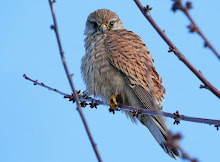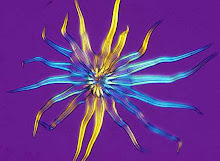Sometimes second-hand book shops can produce some real gems. A few years ago I found this copy of one of the most notable early 19th. century agricultural works, Hortus Gramineus Woburnensis, hidden in a scruffy, nondescript binding
George Sinclair, the author, was gardener to the 6th. Duke of Bedord at Woburn Abbey from 1807-1825. Under direction from the Duke, and with scientific guidance from Sir Humphry Davey (one of the most famous chemists of the age and inventor of the Davey Lamp, designed to reduce the incidence of explosions on coal mines) Sinclair laid out a large grass garden at Woburn, designed to compare the yields and nutritive qualities of over 200 grass species, and also designed to see how they responded to different soil types and fertilisers.
The introduction to my copy (an 1840s reprint of the 1829 4th. edition) describes how important this research was:
"The time has been in this country (writes the anonymous author of the introduction) when providing sufficient forage for livestock, in winter was
a matter of the greatest difficulty, and great losses were sustained, and many
advantages given up, on account of the absolute want of winter fodder. Old
turf, suitable either for grazing or the scythe, was supposed to be a creation
of centuries; and that a farmer who wished to lay down a meadow in his youth,
must see the end of his ‘threescore years and ten’ before he could possibly
possess a piece of pasture capable of keeping a score of sheep, or a couple of
cows."
He then mentions that " ... farmers, who, becoming slowly sensible to the bad practice
of trusting to the sweepings of hay-lofts for their grass seeds …. had begun to purchase pure seeds. " but the varieties and quantities available were limited by the difficulties in collecting them in large quantities. The first to become available was rye grass (Lolium perenne) because its seeds were relatively easy to collect, soon followed by meadow cat's tail Phleum pratense and Cock's foot Dactylis glomerata
Hortus Gramineus Woburnensis describes the results of Sinclair's experiment to compare the agricultural merits of forage grasses and is illustrated with attractive hand-coloured lithographs, showing key recognition features of the most important species described. The first edition, published in 1816, used pressed specimens of the grasses but was far too large and expensive to be of any use to those who would benefit most from the knowledge, so subsequent editions were more compact and illustrated with lithographs.
Aside from the scientific results, Sinclair's text sometimes contains some fascinating snippets of information that give an insight into lost aspects of rural life. He mentions, for example, that culms of crested dog's-tail grass Cynosurus cristatus (above) " are valuable for the manufacture of straw bonnets."
Anyone walking today through a meadow with an abundance of this grass might notice how stiff it's culms are (see picture above) - certainly suitable for plaiting into hat material.
There's an interesting article on straw hat makers of the day on the Jane Austen web site - click here to view. - although I suspect that the hats that Sinclair refers to are much more rough-and-ready affairs.
The original introduction to the first edition spells out the motives for Sinclair's work:
"Grass..........vulgarly forms one idea; and a
husbandman, when he is looking over his enclosure, does not know that there are
three hundred species of grass, or which thirty of forty may be at the moment
under his eye............... Of the one hundred and thirty-three distinct species and
varieties of grass, natives of the British isles, many are of no value to the
farmer, while others constitute the foundation of his riches …."
..... and it was these that Sinclair identified in his ground-breaking comparative experiments. He identified the species that were most productive and most nutritious but, perhaps more importantly, recognised that combinations of species in a pasture or meadow can be more productive that single-species monocultures - a finding that has been reinforced by modern research. Darwin referred to these findings in his Origin of Species and in 2002 a research paper in the journal Science (see below for reference) described Sinclair's research as the 'world's first ecological experiment'.
Sinclair, who conducted much more agrobotanical research (including work on weeds, which I'll write about later) , was highly esteemed in his day and became a Fellow of the Linnean Society. He died at the young age of 47, in 1834.
There's one more interesting insight in my copy of Hortus Gramineus Woburnensis, pasted inside the front cover. The book was originally part of the lending library of Newcastle upon Tyne Farmers' Club, and the notice sternly warns of the penalties and draconian fines for not returning the book on time.
Bibliography:
A.Hector and R.Hooper (2002) Darwin and the First Ecological Experiment. Science 295: 639-640.











































































